Hossam Faris
Specialty detection in the context of telemedicine in a highly imbalanced multi-class distribution
Feb 21, 2024Abstract:The Covid-19 pandemic has led to an increase in the awareness of and demand for telemedicine services, resulting in a need for automating the process and relying on machine learning (ML) to reduce the operational load. This research proposes a specialty detection classifier based on a machine learning model to automate the process of detecting the correct specialty for each question and routing it to the correct doctor. The study focuses on handling multiclass and highly imbalanced datasets for Arabic medical questions, comparing some oversampling techniques, developing a Deep Neural Network (DNN) model for specialty detection, and exploring the hidden business areas that rely on specialty detection such as customizing and personalizing the consultation flow for different specialties. The proposed module is deployed in both synchronous and asynchronous medical consultations to provide more real-time classification, minimize the doctor effort in addressing the correct specialty, and give the system more flexibility in customizing the medical consultation flow. The evaluation and assessment are based on accuracy, precision, recall, and F1-score. The experimental results suggest that combining multiple techniques, such as SMOTE and reweighing with keyword identification, is necessary to achieve improved performance in detecting rare classes in imbalanced multiclass datasets. By using these techniques, specialty detection models can more accurately detect rare classes in real-world scenarios where imbalanced data is common.
Relational Learning Analysis of Social Politics using Knowledge Graph Embedding
Jun 02, 2020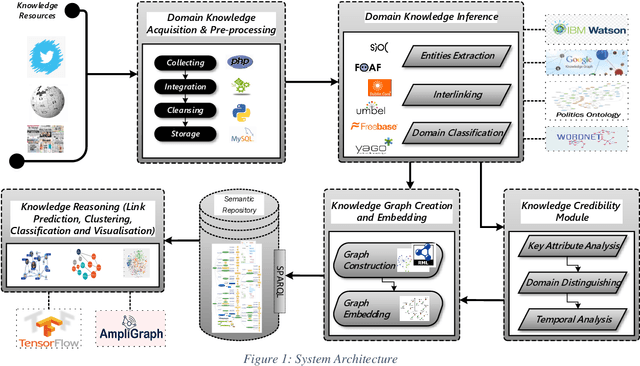
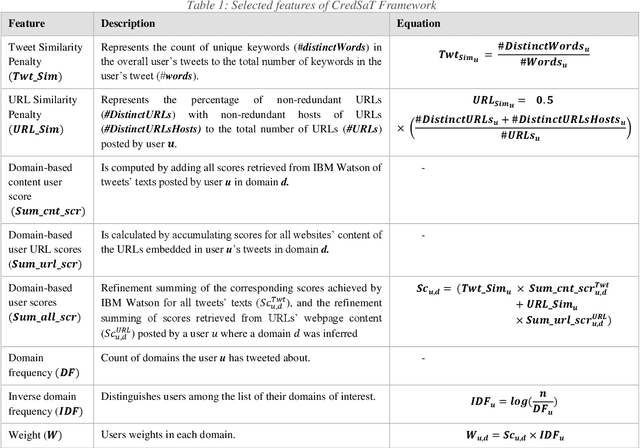
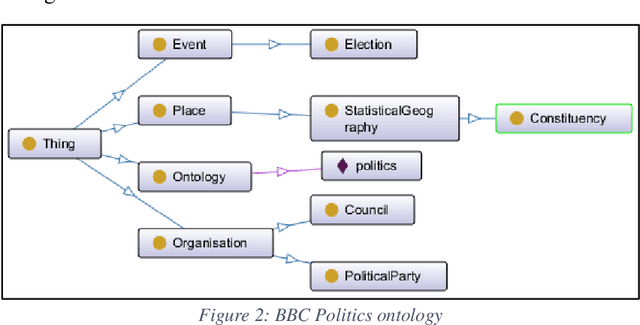
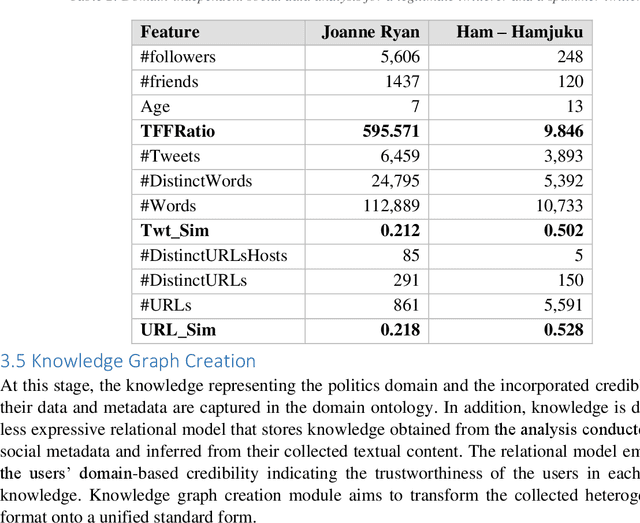
Abstract:Knowledge Graphs (KGs) have gained considerable attention recently from both academia and industry. In fact, incorporating graph technology and the copious of various graph datasets have led the research community to build sophisticated graph analytics tools. Therefore, the application of KGs has extended to tackle a plethora of real-life problems in dissimilar domains. Despite the abundance of the currently proliferated generic KGs, there is a vital need to construct domain-specific KGs. Further, quality and credibility should be assimilated in the process of constructing and augmenting KGs, particularly those propagated from mixed-quality resources such as social media data. This paper presents a novel credibility domain-based KG Embedding framework. This framework involves capturing a fusion of data obtained from heterogeneous resources into a formal KG representation depicted by a domain ontology. The proposed approach makes use of various knowledge-based repositories to enrich the semantics of the textual contents, thereby facilitating the interoperability of information. The proposed framework also embodies a credibility module to ensure data quality and trustworthiness. The constructed KG is then embedded in a low-dimension semantically-continuous space using several embedding techniques. The utility of the constructed KG and its embeddings is demonstrated and substantiated on link prediction, clustering, and visualisation tasks.
Robotics Evolution: from Remote Brain to Cloud
Jan 08, 2019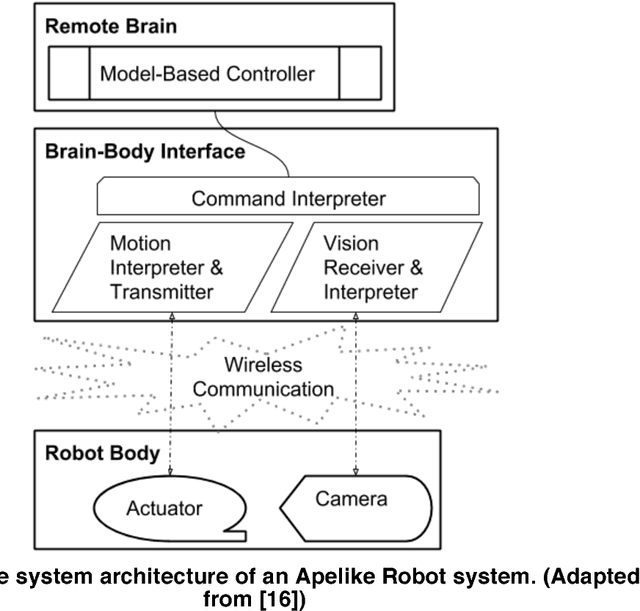
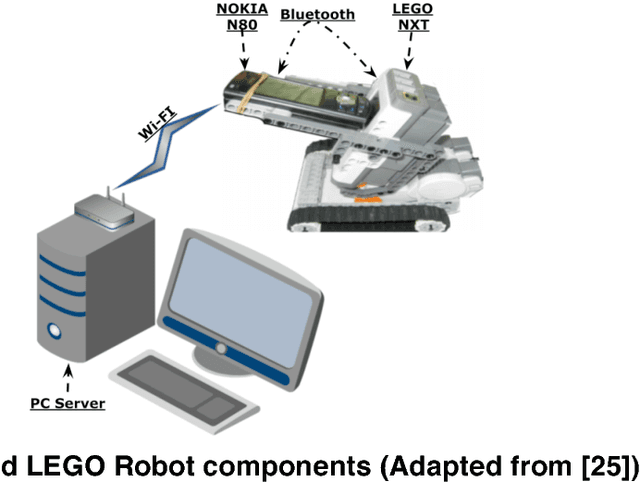
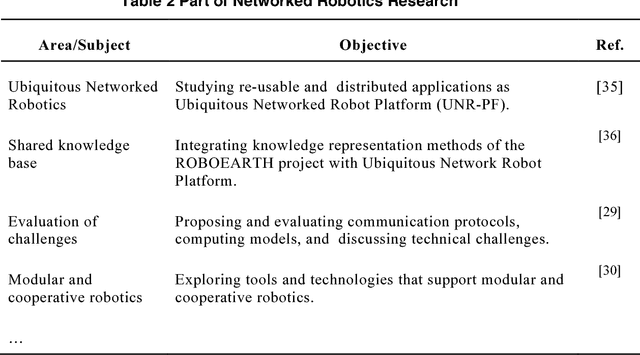
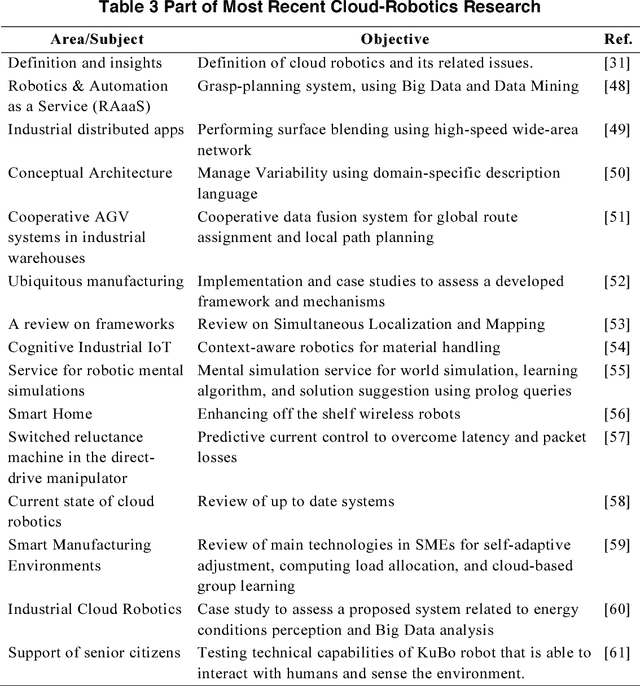
Abstract:Robotic systems have been evolving since decades and touching almost all aspects of life, either for leisure or critical applications. Most of traditional robotic systems operate in well-defined environments utilizing pre-configured on-board processing units. However, modern and foreseen robotic applications ask for complex processing requirements that exceed the limits of on-board computing power. Cloud computing and the related technologies have high potential to overcome on-board hardware restrictions and can improve the performance efficiency. This research highlights the advancements in robotic systems with focus on cloud robotics as an emerging trend. There exists an extensive amount of effort to leverage the potentials of robotic systems and to handle arising shortcomings. Moreover, there are promising insights for future breed of intelligent, flexible, and autonomous robotic systems in the Internet of Things era.
Sentiment analysis for Arabic language: A brief survey of approaches and techniques
Sep 15, 2018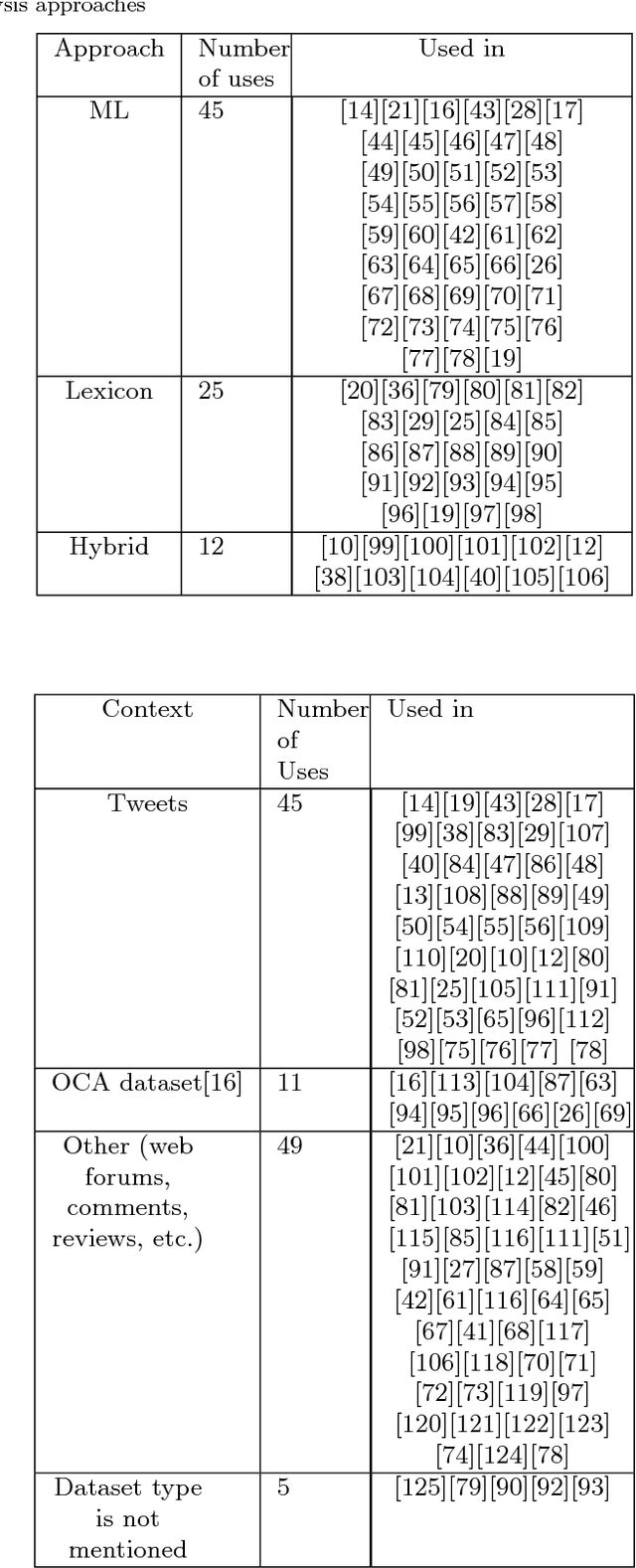
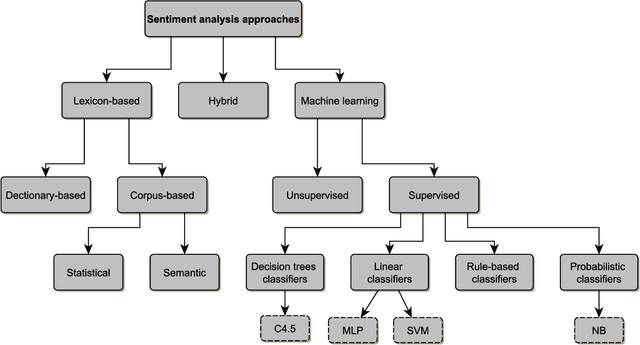

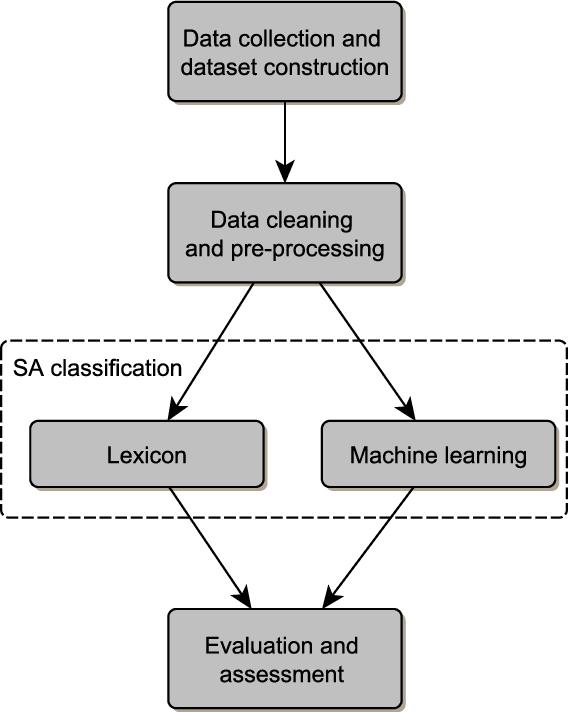
Abstract:With the emergence of Web 2.0 technology and the expansion of on-line social networks, current Internet users have the ability to add their reviews, ratings and opinions on social media and on commercial and news web sites. Sentiment analysis aims to classify these reviews reviews in an automatic way. In the literature, there are numerous approaches proposed for automatic sentiment analysis for different language contexts. Each language has its own properties that makes the sentiment analysis more challenging. In this regard, this work presents a comprehensive survey of existing Arabic sentiment analysis studies, and covers the various approaches and techniques proposed in the literature. Moreover, we highlight the main difficulties and challenges of Arabic sentiment analysis, and the proposed techniques in literature to overcome these barriers.
EMFET: E-mail Features Extraction Tool
Nov 22, 2017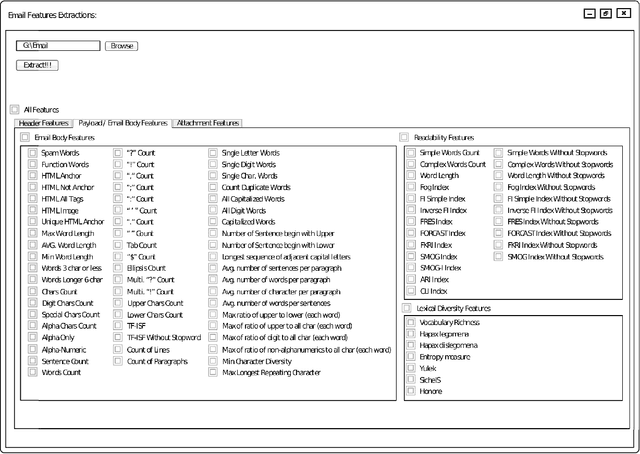
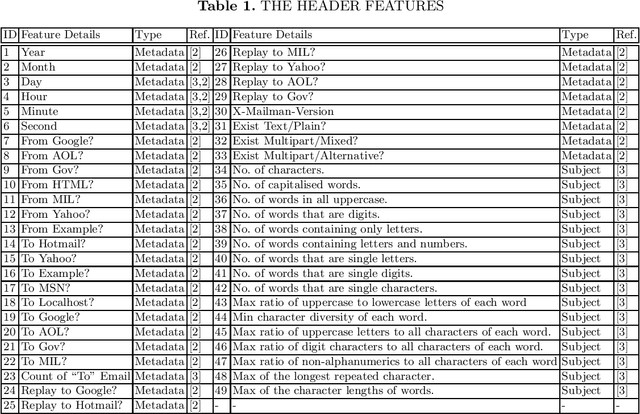
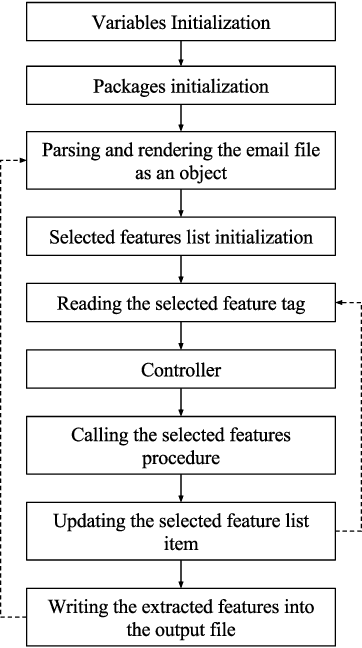
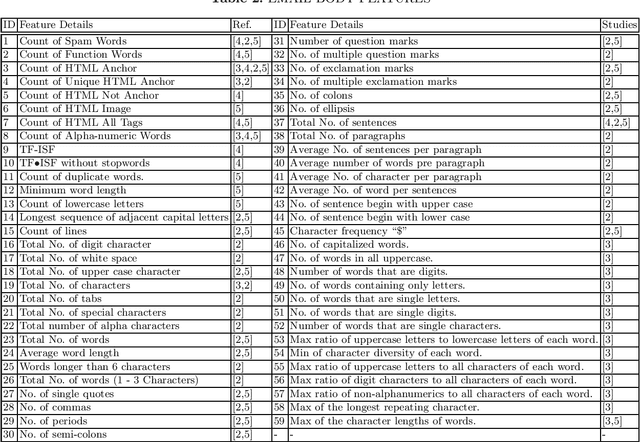
Abstract:EMFET is an open source and flexible tool that can be used to extract a large number of features from any email corpus with emails saved in EML format. The extracted features can be categorized into three main groups: header features, payload (body) features, and attachment features. The purpose of the tool is to help practitioners and researchers to build datasets that can be used for training machine learning models for spam detection. So far, 140 features can be extracted using EMFET. EMFET is extensible and easy to use. The source code of EMFET is publicly available at GitHub (https://github.com/WadeaHijjawi/EmailFeaturesExtraction)
 Add to Chrome
Add to Chrome Add to Firefox
Add to Firefox Add to Edge
Add to Edge